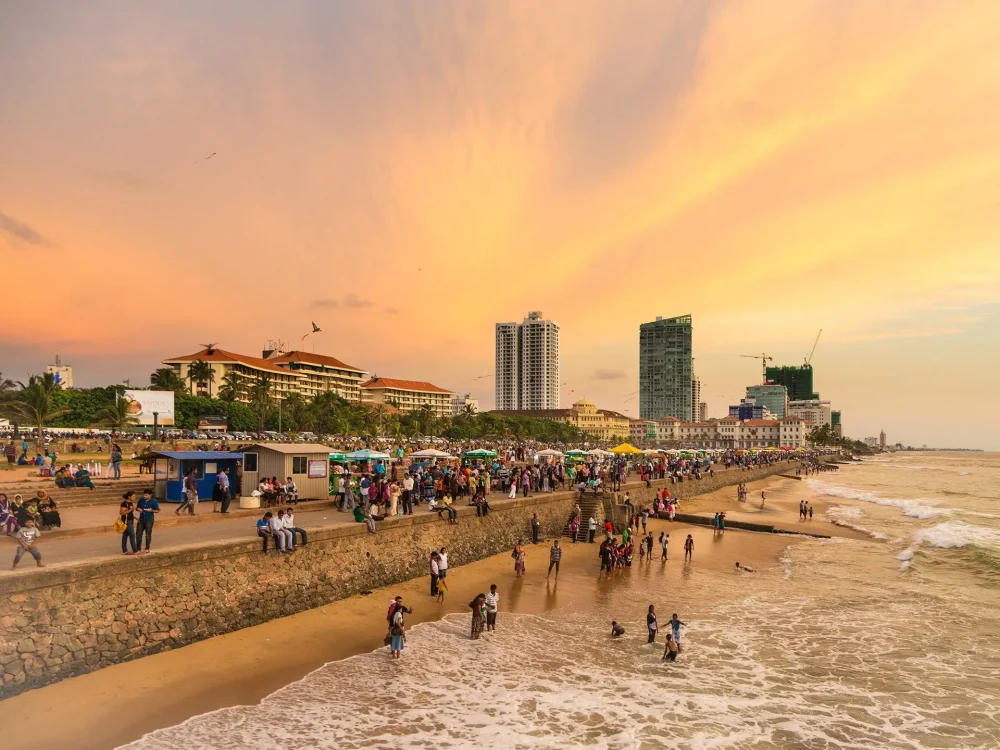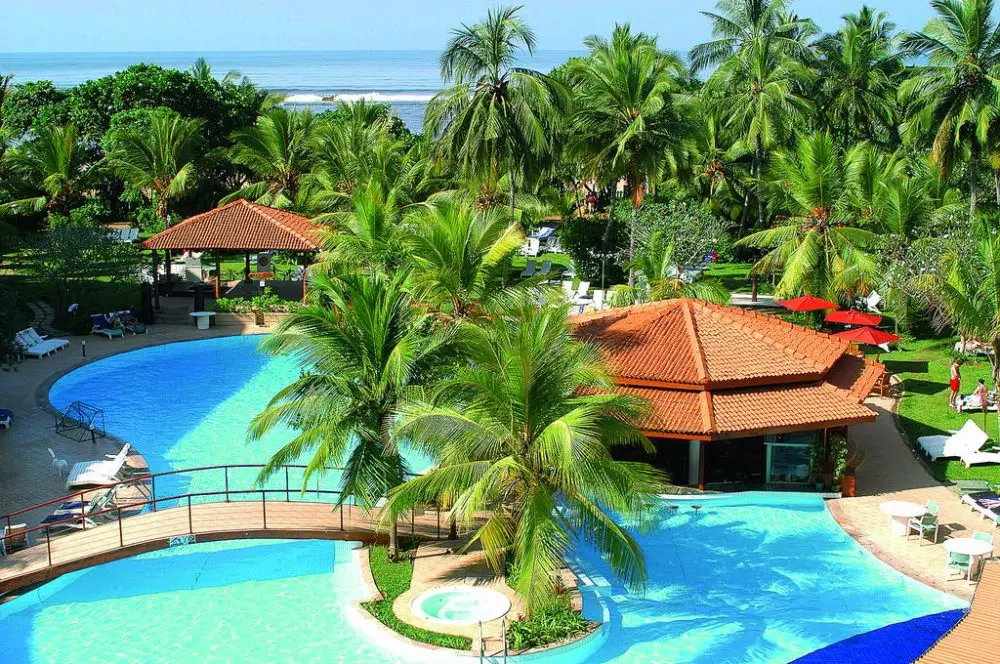In the south of the island, among misty hills and dense forests, hides a highland town with a poetic name Ella. This location has long won the love of travelers, and not without reason. The air saturated with the aromas of tea plantations, dramatic landscapes, ancient caves, and bridges shrouded in morning mist turn the trip into a real adventure.
The question of what to see in Ella arises not by chance—every turn of the road here opens up new horizons, and the routes lead to the natural and cultural wonders of Sri Lanka!

Popularity of Ella in Sri Lanka
Today, the town is not just a point on the map but a full-fledged center of active recreation oriented towards independent travelers. People come here for walks in the hills, observing rural life, and solitude.
The main attractions of Ella are within walking distance, and thanks to its compactness and good logistics, exploring the area is easy.
How to Get to Ella: Routes and Transport
Getting to Ella in Sri Lanka can be done in various ways, but the most colorful remains by train. The stretch between Nuwara Eliya and Ella is recognized as one of the most picturesque on the planet.
Passengers travel through tea plantations, cross bridges and forests, enjoying the rhythmic swaying of the carriages. For those who want to speed up the route, buses and taxis departing from Mirissa, Tangalle, and Colombo are available.
Attractions of Ella in Sri Lanka: Natural Beauties
Looking at what makes Ella unique, it is worth noting the combination of natural landscape with Sri Lanka’s historical heritage. Here, it is easy to combine a relaxed pace of life with enriching walks. The town seems frozen on the border between civilization and wild nature, and each route provides access to new perspectives.
Nine Arches Bridge—Symbol of the Region
The region’s landmark is the Nine Arches Bridge, built in the early 20th century. It connects two hills, with a valley covered in tea bushes and mist below. Visits here are best planned for early morning to avoid crowds and witness the legendary trains leisurely crossing the arches. An architectural feature of the structure is the absence of reinforcement, making it of interest not only to tourists but also to engineers.
Natural Attractions
The main interest in Ella in Sri Lanka is its natural environment. Small trails lead to viewpoints, waterfalls, caves, and peaks. One of the most popular trails leads to Little Adam’s Peak—the climb is easy, and the views from the top are stunning. In the distance, misty mountains, green terraces, and villages shrouded in clouds unfold.
Tea Plantations—Symbol of Highland Sri Lanka
The surroundings of Ella are famous for their tea plantations in Sri Lanka. The landscape here is formed by living green waves of bushes where tea pickers move around. Some factories not only offer a view of the process but also a taste of the fresh drink. Halpewatte, the largest in the area, offers tours and shops at the production site. Landscapes with plantations often become the subject of professional photo shoots and travel blogs.
Best Hotels in Ella and Accommodation Features
Despite its compact size, the town offers a variety of accommodation options. From boutique hotels with panoramic pools to budget guesthouses. Many rooms are located on slopes, offering views of the valley. The main advantage remains the proximity to all routes.
Also, it is worth noting that during the high season, booking in advance is advisable—Ella’s popularity among tourists leads to high demand!
What to See in Ella: Places to Start With
To not miss important points, below is a list of the main locations that make up the must-see program:
- Nine Arches Bridge—an engineering marvel framed by jungles;
- Little Adam’s Peak—a simple trail leading to a panoramic platform;
- Ravana Cave—a place associated with Hindu legends;
- Ravana Falls—one of the most photogenic waterfalls;
- Halpewatte Tea Plantations—tours with tasting;
- Ella Rock—a moderately challenging route with breathtaking views;
- Dhowa Buddhist Temple—a secluded place with ancient frescoes;
- Ella Railway Station—a nostalgic architectural heritage site;
- Uva Halpewatte Lake—a quiet area for walks and bird watching;
- Street with cafes and hotels in downtown Ella—convenient infrastructure for relaxation.
Visiting these places allows you to get a complete impression of Ella’s attractions and experience the uniqueness of the region of Sri Lanka.
What Clothes to Take to Sri Lanka and What Weather to Expect in Ella?
The climate of the region differs from the coastal areas: the weather is cooler, especially at night. During the day, the temperature stays between 22–26 °C, with precipitation mainly in the summer. It is important to bring a light jacket, comfortable trekking shoes, and sun protection.
In the rainy season, a raincoat or umbrella is necessary. Since the highlands are accompanied by sharp weather changes, clothing should be layered.
Trekking Routes and Active Recreation in Ella
One of the main types of leisure activities remains walking along routes of varying difficulty. For enthusiasts of active recreation in Sri Lanka, the trails to Ella Rock, Little Adam’s Peak, and routes along the railway are suitable.
The climbs require moderate physical fitness, but the reward is the landscapes, which are rightfully considered some of the best in Asia. Trekking activities here are conducted with local guides or independently.
Entertainment and Infrastructure: How to Spend the Evening?
In addition to nature, Ella in Sri Lanka offers cozy cafes, vegetarian restaurants, clothing, and souvenir shops. In the evening, local establishments come alive with the sounds of live music.
Culinary masterclasses and yoga classes are often organized. The nightlife is calm but rich—suitable for those seeking a mountain solitude atmosphere without boredom.

Conclusion
Ella is more than just a destination in Sri Lanka. It is a place where every turn of the trail reveals a new horizon, where tea plantations, waterfalls, bridges, and caves form an unforgettable portrait of Ceylon. People come here for tranquility, inspiration, and a true immersion in nature.
Those who have once visited this natural corner return again to feel the freshness of the morning mist and hear the rhythm of the train against the backdrop of the mountains!
 en
en  ru
ru  de
de  nl
nl  ar
ar  es
es  fr
fr  hi
hi  it
it  pt
pt  el
el 











